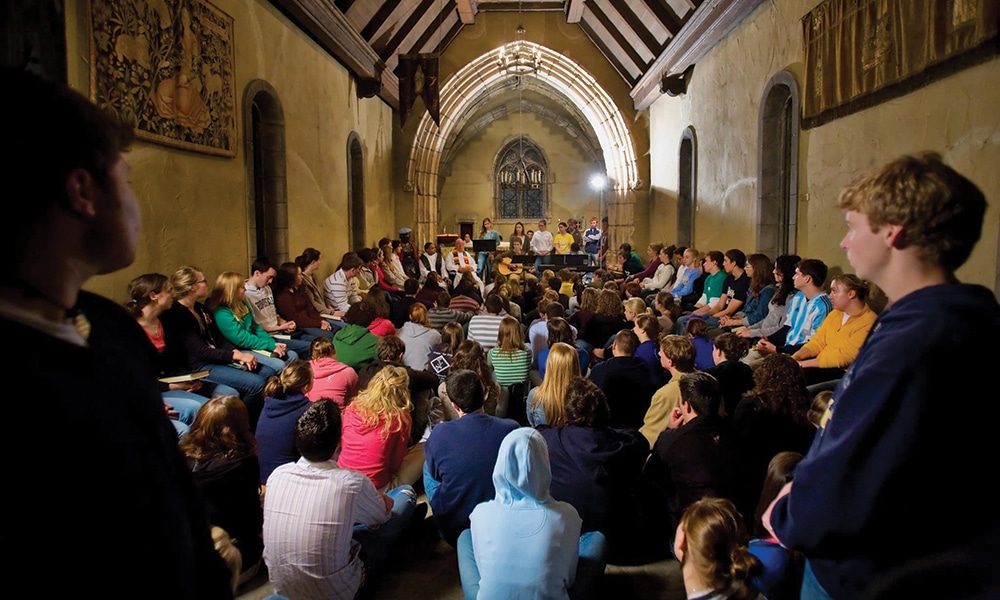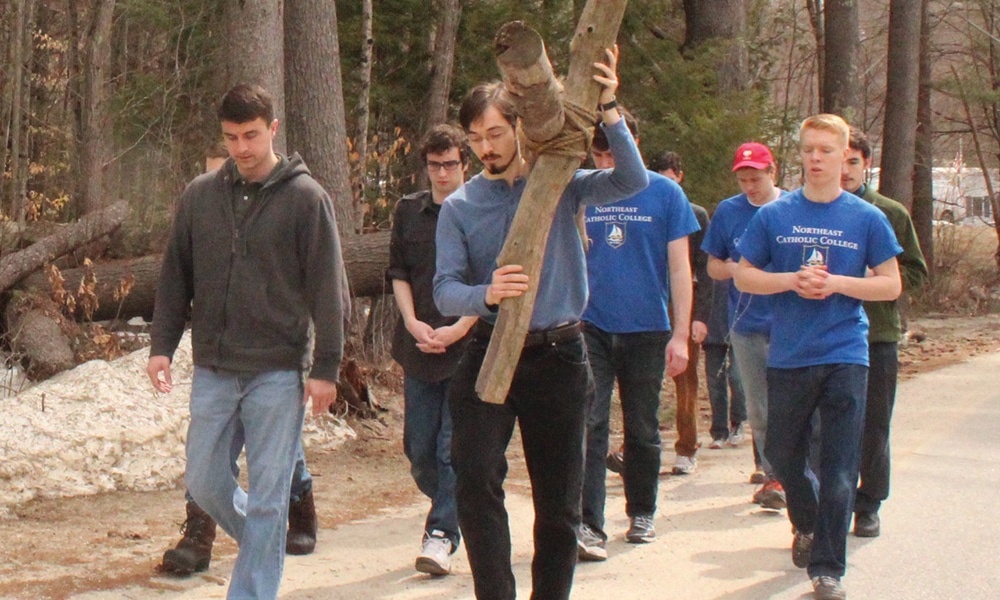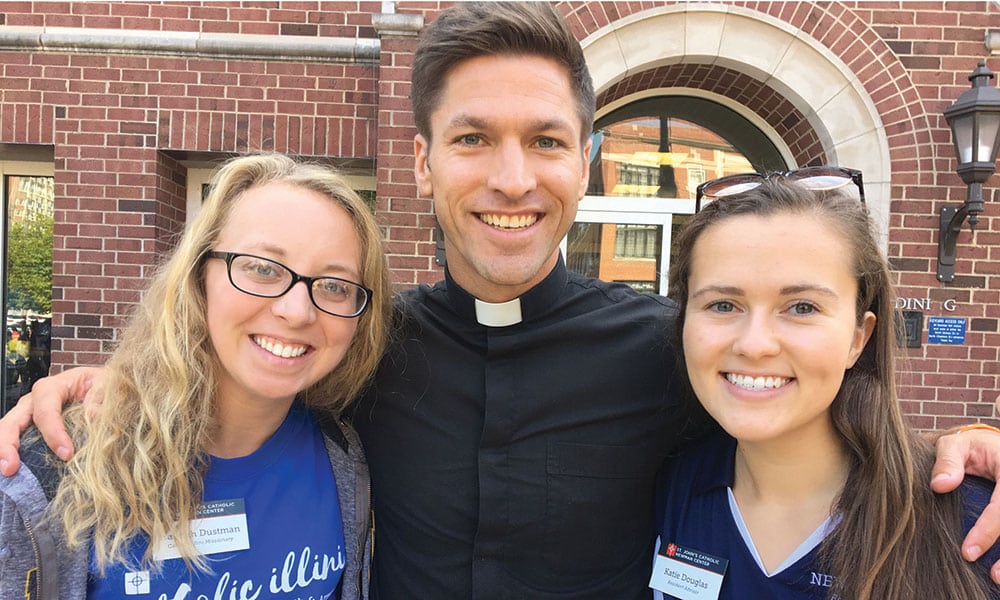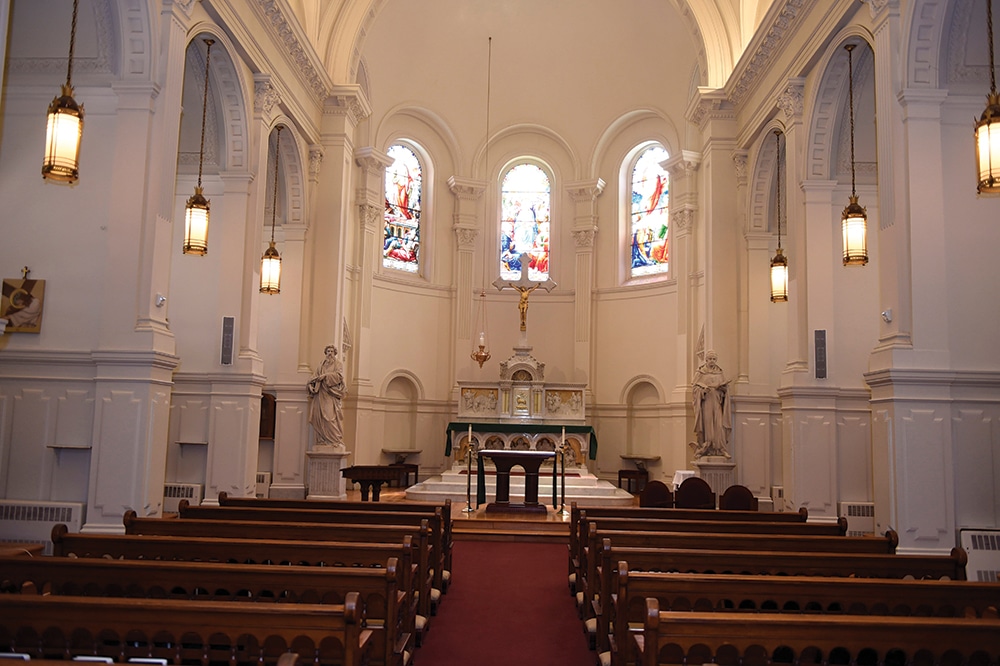Most people wouldn’t expect to find a medieval French chapel in the heart of an urban university campus in the Midwest, but that description fits Marquette’s St. Joan of Arc Chapel.
Its history includes two moves, a fire and a possible link to the French solider-saint.
But for members of the Marquette University community in Milwaukee, the chapel is more than a historical curiosity or quiet place to pray.
Ann Hilbert, administrative assistant for Marquette’s university ministry department, said the daily Mass offered at 10 p.m. Tuesdays in particular has caught the imagination of the students, who push the 35 chairs in the nave to the side and pack themselves in on the floor.
When the weather is good, they’ll open the doors and spill outside, thus allowing a congregation of 100 or more to participate in the evening Mass.
Early beginnings
According the chapel’s website, it originally was built around 1420 in the village of Chasse in the Rhone valley in the south of France, and it was named after St. Martin de Seysseul. That means it’s the oldest building by far for hundreds of miles around.
“It’s interesting to think what kind of things happened there over those hundreds of years,” Hilbert said.
The chapel served its community for centuries before falling into disuse and disrepair around the time of the French Revolution.
According to the history, architect and historian Jacques Couelle found the chapel in the 1920s and made drawings of it, measured it, photographed it and numbered the stones. He wrote that it was “absolutely unique in its genre.”
Gertrude Hill Gavin, the daughter of an American railroad magnate, learned of the chapel. She bought it, had it dismantled and shipped across the Atlantic, and reconstructed it on her property on Long Island, New York, in 1926. She already had a chateau that also originally was built in France and then rebuilt on the same property as the chapel.
Connection to Joan of Arc
It was Gavin who renamed the chapel for St. Joan of Arc, who was canonized and named a patron saint of France in 1920. In 1933, Pope Pius XI gave Gavin written permission to have Mass celebrated in the newly reconstructed chapel; the letter hangs in the chapel today.
Gavin also purchased a 13th-century Gothic altar for the chapel and a “Joan of Arc stone,” believed to be one of the stones in the pedestal of a statue before which St. Joan prayed for success in battle. The stone, which St. Joan is believed to have kissed, has an official French endorsement of authenticity. It was installed in a niche behind the altar, and it is said to always be cooler to the touch than the stones around it.
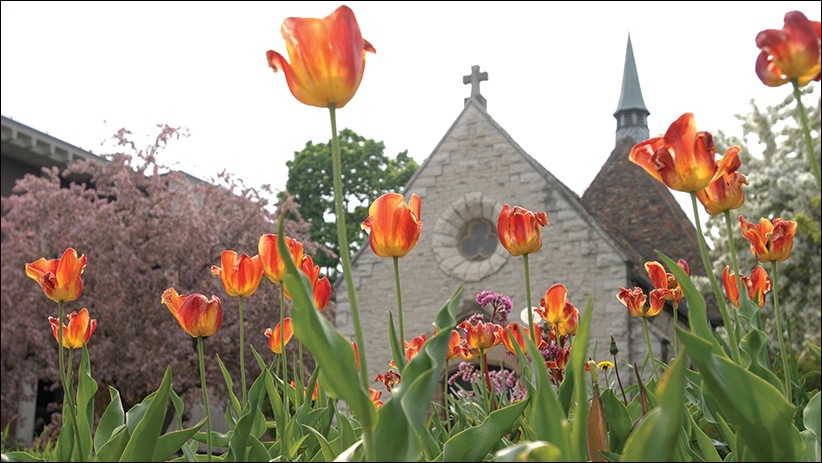
“We go by faith when it comes to that,” Hilbert said, adding that the university has declined requests to make a scientific study of the stone.
Some believe St. Joan, who led the French army to victory against the English in the Battle of Orleans in 1429, may have prayed in the chapel in Chasse, although that point has been debated. St. Joan was captured and burned at the stake as a heretic in 1431; 25 years later, French King Charles VII ordered an independent investigation into her death and declared her an innocent martyr.
Final home on campus
The chapel remained on the Long Island property until the 1960s. Gavin sold it and the chateau to Marc Rojtman and his wife, Lillian, in 1962, but five days before the couple was to move in, fire ravaged the chateau. The chapel was left unscathed.
Rojtman then wrote to Jesuit Father Edward J. O’Donnell, then president of Marquette, offering the chapel to the university. They “believed their gift would be appreciated for its historical and artistic value, functionality and unique status it would confer upon the university.” In his letter, Rojtman wrote, “I am sure you fully understand that this chapel means far more to me than any donation I have ever made and transcends by far any mere monetary value.”
By 1966, the chapel once again had been disassembled, moved and reassembled. Some changes were made, including lengthening the nave and adding modern conveniences and utilities, such as electricity and radiant floor heating.
While it cannot be used for sacraments such as weddings or baptisms because it is not a church of the Archdiocese of Milwaukee, groups can make arrangements to use it for prayer services or Masses.
“The important thing for us is that it is still used for its original purpose, which is prayer and worship,” Hilbert said.
Mass is celebrated in the St. Joan of Arc chapel at noon Monday through Friday and at 10 p.m. Monday through Thursday when classes are in session. It is open for tours from 10 a.m. to 4 p.m. Monday through Friday and noon to 4 p.m. Sundays. There is no charge for tours, but free-will offerings are accepted.
| Building Community |
|---|
|
Erynne Lewis, a senior studying theology and sociology at Marquette, heard about the 10 p.m. Masses at the St. John of Arc Chapel when she first arrived on campus. Most everybody knows where the chapel is, situated as it is among the academic buildings and near the library, and most students know about the Tuesday night Masses, which draw the largest congregation during the week. They might not know about all the other Masses, Lewis said, but she prefers the evenings. “It’s just a little quieter and more peaceful, with maybe simpler music on Mondays and Thursdays,” she said, adding that she often attends Mass at 10 p.m. on Mondays with friends. Wednesday evenings, when Lewis helps out as a sacristan or greeter, have a different vibe, with more praise and worship-style music, with which she will also help if needed. “People like going to Mass there because it’s a very unique space, and it’s very beautiful,” she said. “But the biggest thing for me is the community. When I first started going, there were other people who started going at the same time, and I made a lot of friends there.” It’s also a place to invite other friends, perhaps people she’s met in class or on a retreat, to reconnect. “I’ll just say, ‘Want to go to Mass at St. Joan of Arc and get something to eat before or after?'” Lewis said. |

